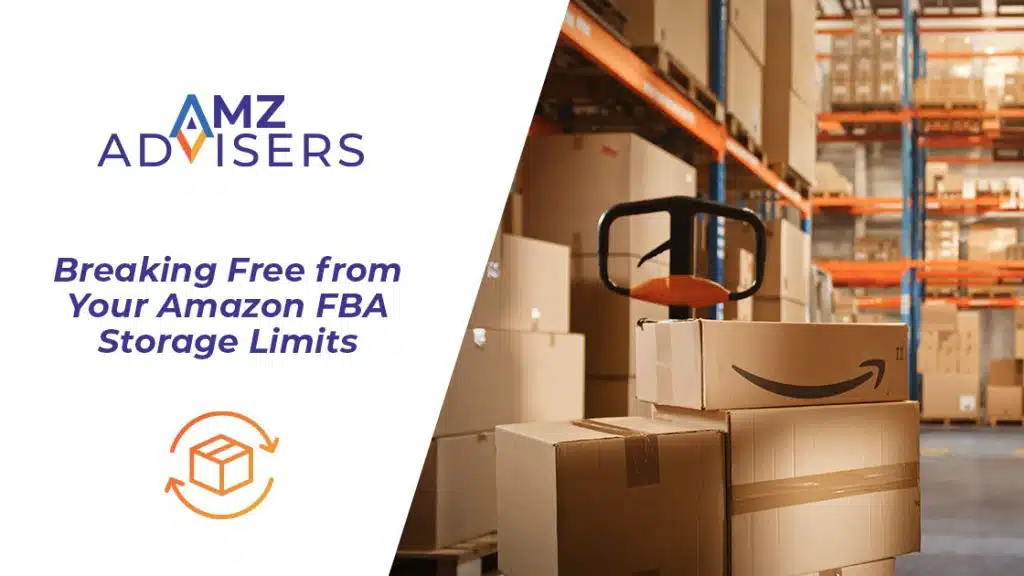Acquiring product liability insurance is a smart move to safeguard your success on Amazon.
Selling on Amazon can be an incredible business model, but this doesn’t mean that it comes without its challenges. One big risk that often gets overlooked is seller insurance.
Amazon is not always accountable for seller’s mishaps. So, if a customer claims your product caused them harm or damaged their property, you could be facing some legal or financial trouble.
It’s the kind of issue that can make or break your business if you’re not prepared. It’s up to sellers to protect themselves from injuries, accidents or litigation. This is where product liability insurance comes in.
Let’s break down everything you need to know about product liability insurance, how to meet Amazon’s requirements, and practical steps to keep your business protected.
What Is Amazon Product Liability Insurance?
Product liability insurance is what protects you from claims that an item caused harm or injury to customers. Let’s say you sell skincare products, and a customer has a serious allergic reaction. Even if you did everything right, they could still take legal action.
In such a case, product liability insurance will take care of the medical bill to treat the customer. This type of insurance can also cover any legal fees from lawsuits. In other words, you’d be protecting your brand from costly settlements.
It’s not something we like to think about, but accidents happen and it’s important to be prepared.
Product liability comes into play when a product is considered unsafe, whether it’s due to a design flaw, manufacturing error, or even improper labeling. It doesn’t matter if you’re the manufacturer, wholesaler, or retailer: anyone in the supply chain can be held responsible.
Dealing with an unhappy customer is already stressful enough, but without product liability insurance, things can get a lot more complicated.

Do You Need Product Liability Insurance to Sell on Amazon?
Yes, in most cases, you’ll require product liability insurance. Amazon has clear guidelines that sellers must follow to protect themselves and customers from potential harm. Here’s what you need to know:
- Sales threshold. Once you hit $10,000 or more in sales in any given month, Amazon requires you to have product liability insurance. This is a mandatory rule; failing to comply can result in your seller account being suspended or banned.
- High-risk products. Even if your sales are below $10,000, Amazon seller insurance is strongly recommended, especially if you sell high-risk products. These include items such as electronics, baby products, beauty products, and anything that could pose a potential safety risk to customers.
- Minimum insurance coverage. Amazon requires a minimum of $1 million in liability coverage per occurrence and in total (aggregate coverage). Coverage must include both property damage and bodily injury claims. Additionally, you’ll have to list Amazon as an “additional insured.” So, your insurance will also cover the marketplace in case they are named in a claim.
Let’s say you sell baby car seats, a high-risk product category. Even if your monthly sales are under $10,000, it’s important to have insurance because of the inherent risks associated with baby products.
If a customer files a lawsuit claiming the car seat failed during use, causing injury to their child, product liability insurance will cover the legal and settlement costs, saving you from huge financial troubles.
Related content: Amazon Suspension Insurance
Why Invest in Amazon Seller Insurance?
Even if you don’t fall into those requirements, it is always a good idea to be as careful as possible.
Product liability insurance isn’t just about meeting Amazon’s requirements, it’s about protecting your business from unexpected accidents and claims that could otherwise hurt your success.
Here are the top reasons why product liability insurance is crucial for Amazon sellers:
Financial Protection
Accidents happen, and customer claims can come out of nowhere. Lawsuits can be extremely costly. Product liability lawsuits go from 10.000 to several million dollars depending on how serious they are. If your business doesn’t have insurance, these costs would come straight out of your pocket, potentially wiping out your savings or forcing you to shut down.
Peace of Mind
Running a business is stressful enough without constantly worrying about what could go wrong. Product liability insurance lets you focus on growing your business, knowing that if something does happen, you’re covered.
It Keeps You Compliant With Amazon
Amazon requires sellers making over $10,000 per month to have product liability insurance. If you don’t have it, you could lose your Amazon account.
Even if you’re not at that sales level yet, it’s smart to get covered now, so you’re not scrambling to get insurance when your sales pick up.
Product Defect Protection
Even the most careful seller can end up with a product that has defects, be it due to a manufacturing issue or something that wasn’t caught in testing. Insurance helps cover those claims so a small mistake doesn’t turn into a big financial problem.
Brand Image
One bad lawsuit can hurt your reputation and scare off customers. Having insurance shows that you’re serious about safety and that you’ll handle any issues responsibly. This helps keep customers’ trust even if something does go wrong with a product.

Amazon Insurance Requirements
Getting product liability insurance doesn’t have to be stressful. With a clear plan, you can secure the coverage you need and feel confident that your business is protected. Let’s walk through the process step by step, so that you don’t miss anything important.
Find an Insurance Provider That Understands E-Commerce
Not all insurance providers are the same, especially when it comes to ecommerce. Many traditional insurers may not fully understand the unique risks associated with selling products online.
You’ll want to find a provider that specializes in ecommerce and has experience with Amazon’s specific requirements. Here’s what to look for:
- Choose an insurer who knows the risks involved in online selling, such as product liability for different categories (e.g., electronics, cosmetics, baby products).
- Look for companies that already offer plans tailored to Amazon sellers. These plans are designed to meet Amazon’s requirements, which can save you time and hassle.
- Read customer reviews and check if other Amazon sellers are satisfied with their coverage and service.
- Quick tip. Some providers specialize in ecommerce insurance packages, which can make meeting Amazon’s requirements a breeze. Insurers like Hiscox, NEXT Insurance, or Marsh Commercial often offer specific plans that cater to businesses like yours.
Compare Quotes and Coverage
Gather quotes from multiple insurance providers. Don’t settle for the first option you come across. Comparing different quotes will help you ensure that you get the best value for your money while meeting Amazon’s minimum coverage requirements.
Some of the information you need to compare include:
- Price. Don’t just look at the total premium—also check what the premium covers. You might find that a slightly more expensive policy offers much better coverage.
- Coverage amounts. Amazon requires at least $1 million in liability coverage per occurrence, with a minimum total of $1 million in coverage. Make sure every policy you consider meets or exceeds this requirement.
- Specific product coverage. If you sell specialized products (like electronics, beauty items, or toys), ensure that the policy covers the risks related to those items.
- Exclusions. Some policies might exclude certain risks, like damage caused by product misuse or long-term exposure to a product. Read the fine print carefully.
If you sell beauty products, your policy should cover potential skin reactions or allergic responses. If one provider excludes that, but another includes it at a similar price, the latter might be a much better option for your business.
Add Amazon as an Additional Insured
Amazon requires all sellers who meet their insurance threshold to name them as an additional insured. This means your insurance will protect both you and Amazon if a customer files a complaint.
When setting up your policy, make sure your insurer knows to include Amazon as an additional insured.This extra step is non-negotiable with Amazon. If your policy doesn’t list them as an additional insured, Amazon could refuse to accept it, which could lead to the suspension of your seller account.
- Quick tip. When setting up your policy, make sure the following is included in the additional insured section: “Amazon.com Services LLC, its affiliates, and assignees.” It’s a small but critical detail that helps you make sure your coverage is accepted by Amazon.
Ensure Your Policy Covers Your Specific Products
Each product category comes with its own set of risks. It’s crucial that your policy covers the potential liabilities tied to the products you’re selling. General product liability coverage might not be enough if your products have specific risks associated with them.
This is why you should tailor your coverage based on your specific products. For example, if you sell cosmetics, then your product liability insurance needs to take care of any risks related to skin irritation and allergic reactions.
If you’re unsure whether a particular product is covered, talk to your insurance provider. They can help you adjust the policy to fit the specifics of your product line.
Regularly Review and Update Your Policy
As your business grows, your insurance needs will evolve, too. The products you sell today may not be the same as the ones you’ll sell next year, and your sales volume might increase, leading to higher risk.
It’s essential to review your policy at least once a year to make sure your coverage is still sufficient. Also, you should always update your policy if:
- You add new product lines, especially those with different risk profiles.
- Your sales increase so you might need higher coverage limits.
- You expand to an international market.
- You change your fulfillment method.
- Amazon updates its insurance requirements, so stay informed about any changes that could impact your policy.
- Quick tip. Set a calendar reminder to review your policy once a year. This ensures you’re always covered, and it gives you the chance to catch any potential gaps in your insurance.
Compliance
Meeting Amazon’s insurance requirements is essential if you want to keep your seller account in good standing. Here’s how you can stay compliant and avoid any disruptions to your business:
- Monitor your sales. Amazon requires proof of insurance if your sales exceed $10,000 in a month. Start shopping for coverage before you hit that mark.
- Keep proof of insurance accessible. Amazon can ask for proof of insurance at any time. Make sure you always have a copy of your insurance certificate handy.
- Renew your policy on time. Most insurance policies require annual renewal. Set a reminder to renew well before the expiration date to avoid a lapse in coverage..
- Update your policy when needed. Check in with your insurer to ensure your coverage is still adequate. Failing to update your policy could leave you vulnerable to claims.
FAQs
Do You Need Product Liability Insurance if You Have an LLC or Sole Proprietorship?
Whether you’re a sole proprietor or an LLC, having the right coverage is crucial for protecting your business on Amazon. Even with the legal separation provided by an LLC, certain claims can still target you personally.
For example, if a customer sues your business for a defective product and you’re a sole proprietor, your personal savings and even your home could be at risk if you don’t have insurance to protect you.
What Happens If a Customer Files an A-to-Z Claim?
Amazon’s A-to-Z Guarantee gives customers peace of mind, but it can put sellers at risk. If a customer files an A-to-Z claim and later escalates it to a lawsuit, having product liability insurance will cover the legal costs and damages.
Final Thoughts
When you are starting a business, you want to look into the sales and see those numbers go up. However, it is important to understand the risks that come with this business model and make sure to have the right protection.
Most sellers must comply with the Amazon Product Liability Insurance requirements. This will keep you compliant with Amazon’s rules and protect you from costly lawsuits.
The odds of having an Amazon customer sue you are low. But it’s always better to be prepared. So, review your policy and stay proactive, you can ensure your Amazon business stays protected as it grows.
Getting the right coverage now will give you peace of mind and allow you to focus on building your business without worrying about what could go wrong!
Author

Esteban Muñoz is a content manager with several years’ experience in digital marketing and ecommerce. He’s been able to achieve incredible growth for his associates by optimizing and managing their accounts, and creating in-depth content marketing strategies.
 Antonella Fleitas is highly adept at creating fact-based, evergreen content about science, language learning, and culture. Her main goal is to build a strong content foundation for her clients, based on meaningful stories that people can learn from.
Antonella Fleitas is highly adept at creating fact-based, evergreen content about science, language learning, and culture. Her main goal is to build a strong content foundation for her clients, based on meaningful stories that people can learn from.



